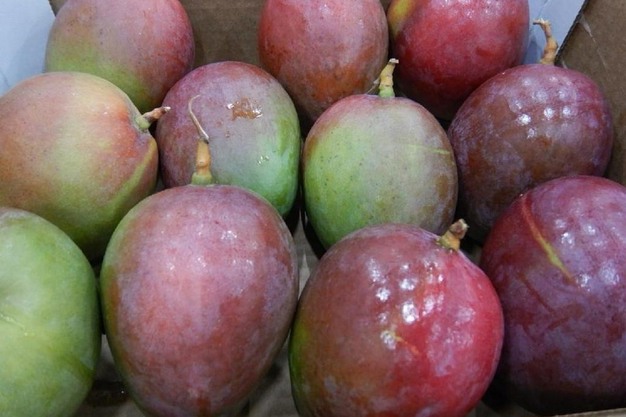The mango market is following in the footsteps of the lime market. "Prices were very high until a month ago. "The price of a mango imported by sea was as high as 10 to 11 euros, with no difference in origin or variety. However, especially since the last week, the trade has slowed down considerably. Current prices are 7.5-8 euros and are expected to fall in the near future," said Giorgio Donnarumma, Nuovafrutta's Milan sales manager.
 Left: Brazilian Palmer mango, imported by sea. Right: Brazilian Kent mango imported by air.
Left: Brazilian Palmer mango, imported by sea. Right: Brazilian Kent mango imported by air.
"It was a rather desolate November from the consumer's point of view," says Donnarumma. "Compared to previous years, the consumer's purchasing power has changed, but this applies to all products, not just mangoes. When there's a market block like this, it's usually the products that are considered extra that pay the highest price. In Italy, mangoes are considered a non-essential product.
 Peruvian Kent mango imported by air
Peruvian Kent mango imported by air
The situation is very similar for mangoes imported by air. "Some of the campaigns have come to an end and the Peruvian campaign has started. The starting prices are very high, we are talking about $25 (about 23 euros) excluding expenses for the Kent type, which after freight, customs and various additional transportation costs, reaches the market for up to 42 euros. Selling at such prices is practically impossible. "Consumers prioritize their purchases and dispose of the surplus. Donnarumma points out that the Peruvian mango is currently under pressure because there is also a Brazilian product on the market at a lower price.
 Brazilian Tommy mango imported by sea
Brazilian Tommy mango imported by sea
"As we approach the holiday season, particularly from 8 December, we hope to see an improvement in consumption. But this will be a short interlude determined by the holidays and cannot be a snapshot of the real demand. We will have to wait and see what happens from 10 January onwards," concludes the wholesaler.
Article photos courtesy of Giorgio Donnarumma










